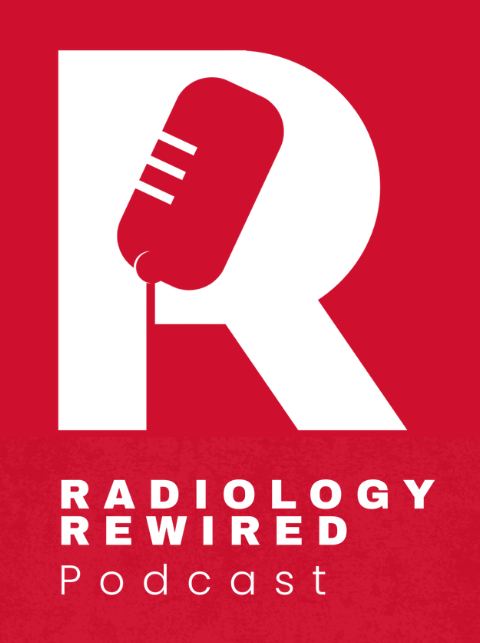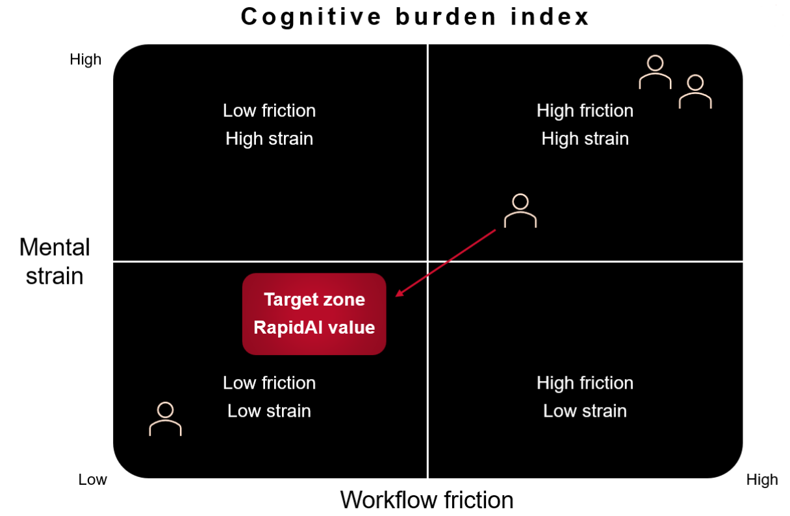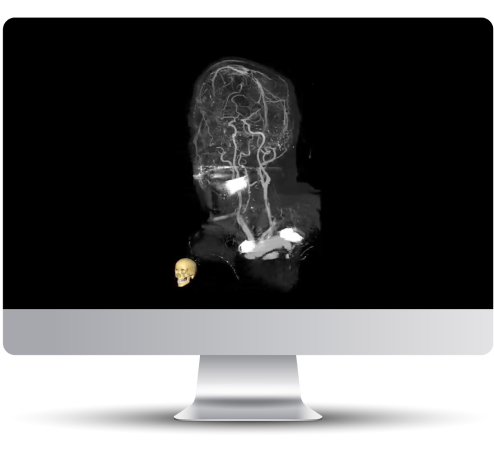Turning imaging bottlenecks into ROI
Hospital administrators face an ongoing challenge: how to deliver innovation while protecting margins. Imaging departments are often under intense pressure, with valuable scanner time often consumed by manual post-processing and staff stretched thin. In this environment, even small inefficiencies can add up to major costs.
Nowhere is this more evident than in 3D reconstruction workflows. Manual processes can consume 30 minutes or more of technologist time per case, creating delays, inconsistency, and variable image quality. For leaders managing capacity and revenue, these inefficiencies aren’t just operational headaches — they represent lost opportunities.
Lumina 3D was designed to solve this problem. By automating reconstruction, it consistently delivers high-quality reconstructions while cutting turnaround time dramatically. For one Midwest hospital system, automation translated into a 24-minute time savings per scan, five additional scans per day, and $61,000 in incremental monthly revenue.
The hidden costs of manual 3D reconstruction
Before adopting Lumina 3D, technologists at a 700-bed health system faced a frustrating reality: every head and neck CTA required manual reconstruction. Depending on the technologist’s experience, the process took anywhere from 15 to 45 minutes, averaging 31 minutes per case.
This variability created workflow bottlenecks. Some scans sat in backlog while others were rushed through, leaving radiologists with inconsistent quality. As imaging volumes grew, so did the strain — both on scanner utilization and staff morale.
Inconsistent reconstructions also undermined clinical confidence. Radiologists often found that manual 3D reconstructions weren’t reliable enough for diagnostic decision-making, forcing them to spend more time reviewing source data. The net effect: longer turnaround times, delayed care decisions, and missed revenue potential.
Automation as a workflow multiplier
With Lumina 3D, that same hospital cut reconstruction time to just seven minutes per case. The result was a net savings of 24 minutes per scan, freeing up 72 hours of CT technologist time in the first month alone.
Instead of being tied up with manual post-processing, staff could focus on patient care and increase scanner utilization. More importantly, automation ensured reproducible, high-quality reformats every time — eliminating the inconsistency that had frustrated radiologists and slowed down treatment decisions.
As Raza Mushtaq, MD, neuroradiologist at Barrow Neurological Institute, explained during a recent Lumina 3D webinar, reproducibility is where the real clinical value lies. Automated reconstructions produce consistent, high-quality images that radiologists and interventionists can use to confidently visualize vascular tortuosity, stenosis, aneurysms, and other critical anomalies.
Learn more about how RapidAI supports care teams with integrated imaging solutions.
Quantifiable ROI for hospitals
Automation didn’t just save time — it drove measurable financial returns. By reclaiming 24 minutes per scan, the imaging team was able to add five additional scans per day without increasing staff burnout.
That throughput translated into an incremental imaging revenue increase of about $61,000 per month. For administrators and CFOs, this represents a clear case of technology investment delivering both operational efficiency and bottom-line impact.
And the value extends beyond revenue. As RapidAI’s clinical evidence demonstrates, ROI in healthcare today is multidimensional: it includes time saved, burnout reduced, and throughput increased — all of which directly affect patient care.
Clinical impact and reimbursement confidence
Beyond efficiency and revenue, Lumina 3D strengthens diagnostic confidence. Automated reconstructions eliminate the variability caused by technologist experience and scanner differences. Radiologists receive consistent, reproducible reformats that they can rely on for decision-making.
This is particularly valuable in complex regions such as the skull base, where aneurysms often hide among bone structures. With Lumina 3D, these areas are easier to evaluate, helping to improve diagnostic accuracy and supporting better treatment planning.
Automation also supports billing compliance. The American College of Radiology requires 3D reconstructions for CTA reimbursement, and CMS mandates documentation of those reconstructions. With Lumina 3D, hospitals can help ensure each CTA includes the required 3D reconstructions, supporting compliance and accurate documentation.
Taken together, these gains show how imaging automation can serve as the foundation for broader AI adoption—linking clinical, operational, and financial value. See how hospitals are scaling AI beyond single-use tools in our blog on scaling AI from siloed tools to an enterprise platform.
Why Lumina 3D makes sense for hospital administrators
For administrators, CFOs and imaging leaders, Lumina 3D offers more than incremental improvement — it provides a scalable solution that aligns with both clinical and financial priorities.
- Operational efficiency: 24 minutes saved per scan, 72 hours of technologist time freed per month.
- Revenue growth: Five additional scans per day, generating $61,000 in monthly incremental imaging revenue — or more than $730,000 annually.
- Clinical confidence: Consistent, high-quality reconstructions that radiologists can trust for decision-making.
- Compliance assurance: Meets ACR and CMS requirements for CTA billing.
As one healthcare executive noted, ROI today isn’t just about cost or revenue — it’s about throughput and resilience. For imaging leaders balancing productivity, quality, and staffing pressures, Lumina 3D delivers measurable results across all fronts, helping hospitals unlock measurable ROI while improving the patient and staff experience.
Unlocking measurable ROI with Lumina 3D
Manual 3D reconstruction once consumed 30 minutes per case, bottlenecking workflows and limiting revenue potential. Lumina 3D turned that challenge into an opportunity — saving 24 minutes per scan, enabling five more scans each day, and delivering $61,000 in incremental monthly revenue.
For hospital administrators and CFOs under pressure to demonstrate both fiscal responsibility and innovation, Lumina 3D provides a clear answer: measurable ROI, improved throughput, and stronger clinical outcomes.
Ready to explore Lumina 3D’s impact? Visit our content hub for more case studies and ROI insights.


